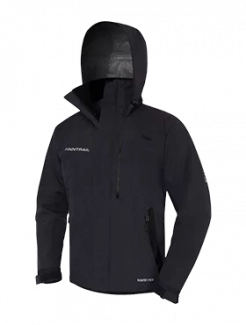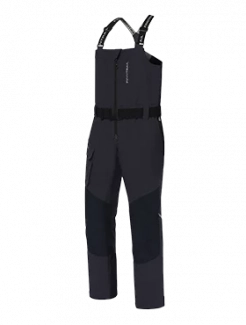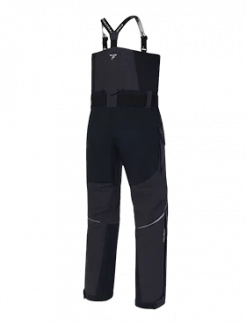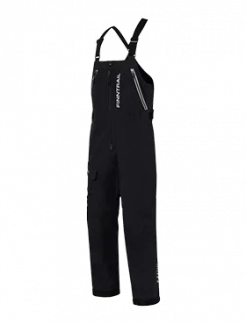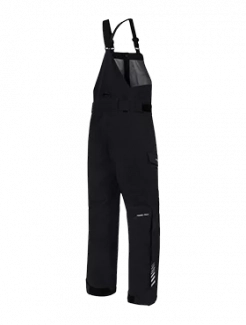Fishing Boat Care Tips to Extend Its Lifespan
Have you ever wondered how long your boat can actually last? You may not realize that neglecting routine maintenance can reduce the vessel’s lifespan by half. Harsh fishing conditions, constant temperature fluctuations, and disregard for service requirements can quickly deteriorate the most important components of a fishing boat. Regular boat care is the key to making your watercraft last longer.
Don't wait to find out what's worse: facing a stormy day or realizing your boat isn't prepared for it. Be ready for both with proper maintenance. Even though various fishing boat services can help, you can perform basic maintenance yourself to keep the vessel sound and shiny. Most methods to prolong a boat's life are cost-free but require discipline and specific knowledge. Whether you are an avid fisherman or just a beginner, these recommendations will help you avoid costly breakdowns and increase the resale value of your boat.

Checklist: What to Do After a Boat Trip
-
Rinse the entire boat with fresh water
-
Flush the motor for 5 minutes at least
-
Wipe down all panels and seats thoroughly
-
Check under the hood for any debris
-
Take a quick look at the terminals and wires
-
Do not leave puddles—dry all standing water to prevent damage and mildew
How to Maintain a Boat Daily?
Cleaning
The main rule is to leave the boat clean after each outing. Saltwater causes corrosion, dried algae becomes sticky and difficult to remove later, any leftover marine life can create unpleasant odors.
Saltwater is particularly harmful as it quickly destroys the shiny polish of metal parts and makes the hull porous. After each voyage, thoroughly clean the hull and deck to remove dirt, fish remains, and debris.
For short outings, rinsing with fresh water is usually sufficient. Longer trips require cleaning with marine soap, vinegar for glass surfaces, or baking soda to eliminate odors. Waxing the hull will also give it a shiny appearance.
The motor is the most expensive part of the boat. Since salt water tends to crystallize, neglecting motor maintenance will lead to serious consequences. It's vital to flush the motor with fresh water for 5-10 minutes after each sea trip—never skip this crucial step.
Routine Engine Check
Before or after going offshore, a regular engine check is essential. Frequent check-ups save money in the long run. When you pop the hood, examine the oil cap, cooling system, and spark plugs. After extended periods on land, insects or small animals might nest in engine parts or on wires. So, lifting the engine cover and removing the dust and debris is important in maintaining a boat. Experienced anglers know that taking a close look at the propeller and removing the salty water with a dry cloth can prevent unexpected breakdowns in the future.
Similarly, checking the oil level with a dipstick is similar to routine car maintenance. You just need to soak it in the oil cap and assess the color, texture, and level. Any abnormalities matter. If everything is fine, then check the oil after every 80-100 hours of operation to prevent engine overheating, which can lead to expensive replacement costs.
Having the spark plugs tightened and neat is the next step in proper boat maintenance. Like the oil, spark plugs typically have a life expectancy of about 100 hours before they may need replacement.
Electricity Maintenance
You have to love doing it, because failing this step may lead to ending up stuck in open water and needing rescue by a fishing boat's service. Whether you are an experienced fisherman or an amateur, you need to understand your vessel's electrical system.
First, thoroughly check the battery, wires, and connector terminals. These terminals are typically placed away from the bilge to avoid electrical hazards, but this makes them prone to corrosion. Don't rely on intuition—use a multimeter to check voltage. When it drops to 12.0V, it's time to recharge.
In addition to standard wire inspection, remember to maintain your GPS updates, radar, and sonar operation. Having backup power on your boat, such as a second battery or additional charger may be a wise decision to avoid different dangerous situations at sea.
If you're uncertain about your electrical equipment, don't hesitate to contact professionals.
Monthly Maintenance
Exterior Inspection
Huge waves and continuous UV exposure can damage your boat. If you want your boat to look fresh, then you have to examine the exterior parts regularly—ideally after each outing. Take immediate action if you notice cracks or blisters on the hull. Even small defects can lead to substantial structural damage.
So, once you find a small crack or a spider crack, rinse the affected area with fresh water, dry and sand it slightly with sandpaper. After that, apply the gelcoat and polish with sandpaper again to restore the glossy finish. For blisters, use the same technique but pierce them first.
In general, waxing and polishing are not part of a daily routine. However, if you're not satisfied with your watercraft's appearance, you can do these tasks whenever you find necessary. Polishing is the best option for combating chalky or faded hulls, while waxing provides water and sun protection and extends your boat's color life. Boat owners recommend performing both of these routines at least 2-3 times a year to keep your boat in top condition.
Sailing in seaweed-dense water often causes the propeller to become covered with algae. A small amount of seaweed on the prop doesn't usually concern boat owners, but significant accumulation can affect the propeller's rotation speed. Similarly, dings and bends prevent the boat from operating at full capacity. Having a spare propeller is a wise decision if you frequently fish in areas with kelp forests.
Fittings are another problematic area. Regularly checking for rust formation and tightening fittings prevents many issues. Metal fittings are like precious jewelry that makes your boat look aesthetic and expensive. Neglecting maintenance causes them to weather and can lead to the loss of cleats, hinges, rod holders, and other metal parts during severe storms.
If you follow these principles, the cost to maintain a boat in peak condition will remain low.
Interior Inspection
Having a big boat is a point of pride, but it also means you must reach more hidden spaces to clean them. The main goal is to protect fancy materials from mold growth and fraying. Proper air circulation keeps surfaces mold-free, which is why the ventilation system must always be functional. A common problem here is ventilation getting clogged with debris, causing boat owners to suffer from odors and mold problems caused to condensation.
When you walk inside the boat, always be alert for two primary issues: damp spots inside the cabin and tears in vinyl seating.
Checklist: What to Do Once a Month
-
Fix small cracks and blisters
-
Wax and polish the hull
-
Check the propeller and remove any algae
-
Clean and check all fittings
-
Combat mold in the cabin
-
Air out the boat by opening all hatches and lockers
How to Maintain a Boat Through the Seasons?
Broadly speaking, seasonal upkeep is done twice a year before and after each season. In contrast to daily or monthly routines, seasonal checkups and maintenance require more time and expense. However, these efforts will pay off by improving resale value and extending your boat's lifespan.
Glass and Gauges Cleanse
The importance of maintaining vinyl curtains or eisenglass panels is often underestimated. Neglecting proper care leads to poor outcomes. For example, scratched vinyl curtains obscure your view of the horizon and may lead to collisions or groundings. To avoid these problems, take proper care of your curtains or panels. For vinyl curtains, gently wipe away dirt using only a microfiber cloth—never polish or sand them. At season's end, roll them up and store them in a dry place without compression.
The age of eisenglass panels can be determined by their color. Over time, they turn yellow due to continual sun exposure. An essential tip here is to carefully remove and store them in a dark, dry room or garage and apply UV protection. Remember that gauges on a boat are not self-cleaning, either.
Servicing the Battery
The key element of seasonal upkeep is battery service and storage. If the battery is fully removable, it's better to keep it in storage during the wintertime. This ensures that when you plan your next sea trip, the battery won't be fully discharged or damaged by freezing. If you remove the battery from the boat, disconnect the negative terminals first, and remember to charge it before using it again.
Spare Equipment
The end of the sailing season is the best time to overhaul or replace worn parts of your boat. Consider inviting a mechanic to inspect your boat's condition and performance.
Thoroughly inspecting spare parts may seem like extra work, but it will reduce maintenance costs in the coming years. While there's no universal list of spare equipment for all boat types, commonly needed items include spark plugs, an extra battery, and fuses.
Winterizing
Covering the boat with a tarp or wrap will protect your vessel during the cold season. Before winterizing, be sure to flush the engine, lubricate all metal components, fill the fuel tank, and change the oil and filters. This is the final step before the off-season, so make a checklist of all necessary adjustments before hauling your boat.
Checklist: End of Season
-
Deep clean the boat inside and out
-
Lubricate all metal parts
-
Inspect the vinyl curtains or eisenglass panels
-
Check the battery voltage and store it in a safe place
-
Purchase necessary spare parts
-
Replace the worn equipment
-
Cover or wrap the boat for winter storage
Final Tips
The cheapest boat to maintain is the one that is cared for regularly. To provide your vessel a long and happy life you need to perform simple actions that take around 20 minutes after each outing. Each part of the boat is finicky, though, and demands special maintenance rules. Consistency and attention to detail are the keys to maintaining your boat for longevity.
Don't forget to prepare yourself for a boating season with FINNTRAIL gear.



